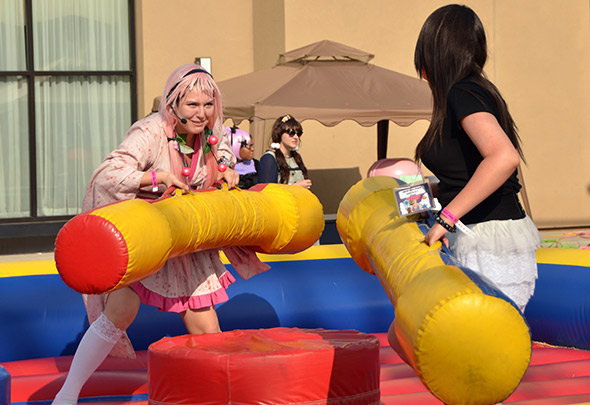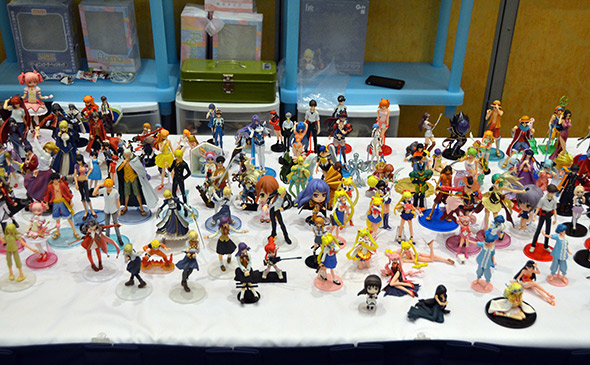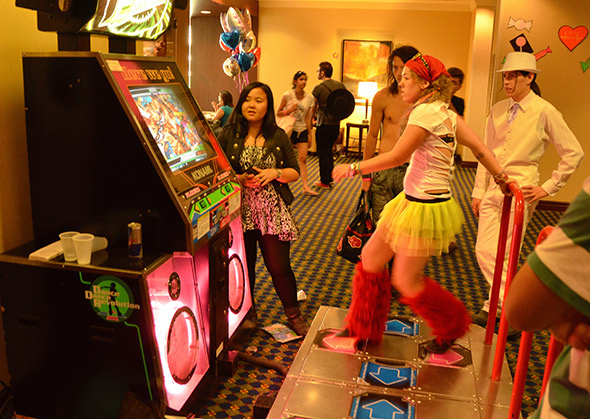The Pine River mother of two never considered she’d ever live anywhere other than in Japan; she was born and raised in Akita, Japan. She had majored in fashion in college and had studied to become a master traditional Japanese dancer. She had danced since she was 4.
After her college graduation, she took a job managing a clothing store in the local mall where she kept seeing this intriguing American college student. One day they struck up a conversation.
This was not easy since she and Jason Marcum, a Pequot Lakes High School graduate, spoke very little of one another’s languages at the time. They initially had to carry a dictionary with them on dates.
Jason Marcum was in Akita studying at St. Cloud State University’s sister university for a year.
The couple hit it off and in 1997 she packed her bags for what was supposed to be a three-month trip to Minnesota to meet his parents and get married. She ended up living here for nearly seven years. It took more than two years for her to get her Green Card.
The couple then moved back to Akita in 2003 when their daughter, Misato, now 12, was 3, and their son, Kyosuke, now 9, was just 6 months old. They lived and worked in Japan for about four years and then moved back to Pine River in 2007. Jason owns Grove Homes Inc., group home in Pine River. Their children, who are bilingual, attend Pine River-Backus Elementary School.
After moving to the United States, Midori Marcum was unable to finish her apprenticeship and become a master dancer. Not finishing her apprenticeship is one of her biggest regrets. Dancing brought out her creativity.
When she moved to Pine River, she needed to find another creative outlet. She had always wanted to try her hand at pottery and took a four-day crash-course pottery workshop at the Franklin Arts Center in Brainerd, a birthday present from her husband. She was immediately drawn to the art. Her grandmother, who raised her while her mother worked, enjoyed pottery so Marcum grew up with an appreciation for the craft.
In Japan it isn’t easy to become a potter; you have to study under a master potter as an apprentice. “It is a much more closed world there,” Marcum explained of becoming a potter in Japan. “There is more freedom here to just pick it up.”
Three years ago she started Midori’s Peace, her own pottery business, and last year she opened her own pottery studio on Highway 371 in Pequot Lakes, where she has her own kiln. She sells her work at her studio and at arts and crafts shows throughout the Brainerd lakes area. Her next shows will be at the Chokecherry Festival in Pequot Lakes Aug. 11, the Hackensack Art and Book Festival Aug. 18 and the Arts off 84 Art Crawl from Pine River to Longville Sept. 1-2.
Marcum said her pottery toad houses are a popular item but so are her coffee mugs and bowls. She tries to infuse her Japanese culture in her pieces while creating functional art.
“I like people to actually use it,” she explained of her pottery. “I don’t want it to sit on a shelf and collect dust.”
She named her studio Midori’s Peace because she said she has to be at peace in order to create her art.
“You have to be at peace to make something beautiful,” she said with a smile.
For the past two years, Marcum also has decorated ice cream cakes at the Dairy Queen in Pequot Lakes. It’s another way for her to use her creativity.
She also enjoys oil painting and would like to work in leather craft someday.








